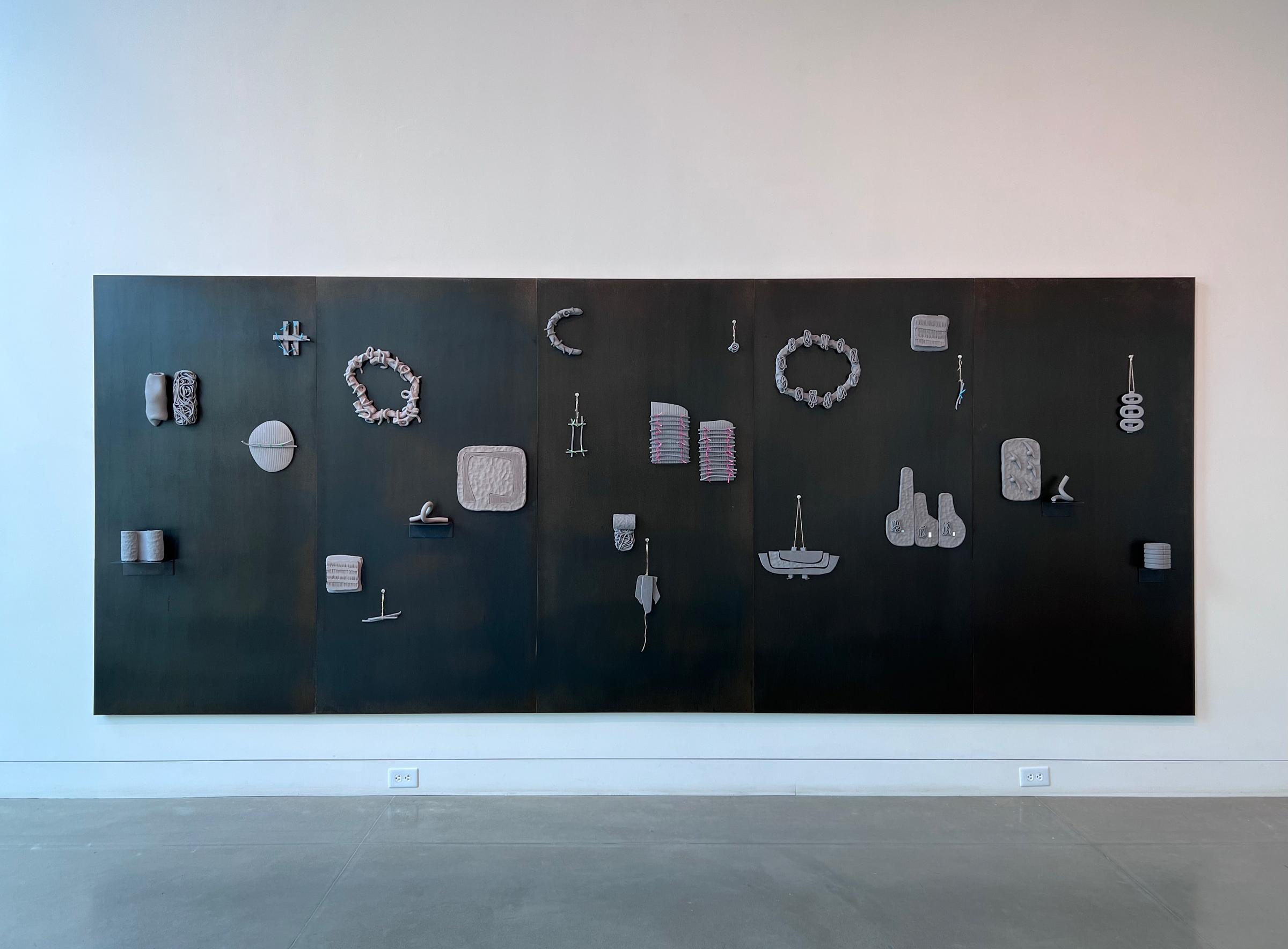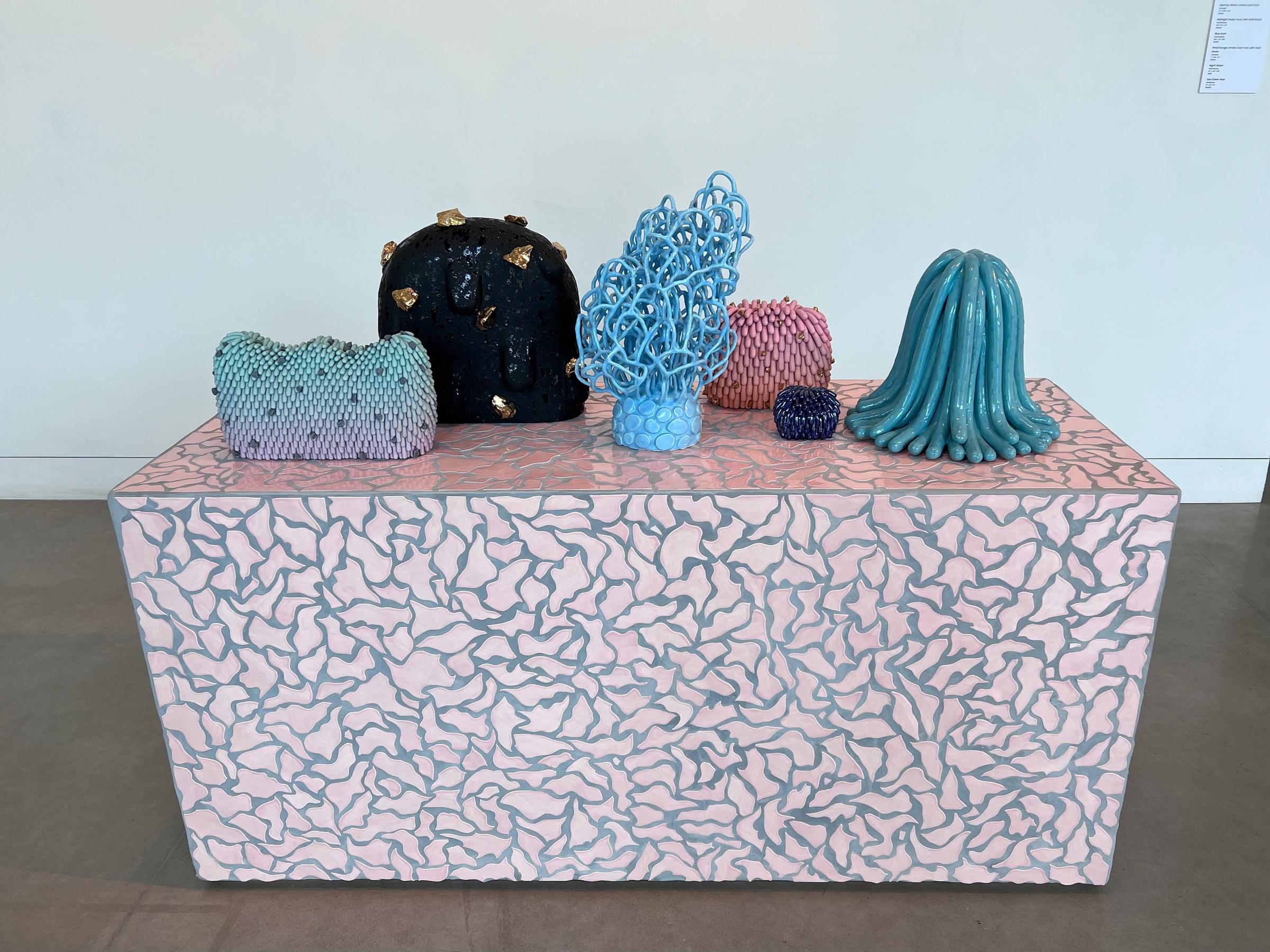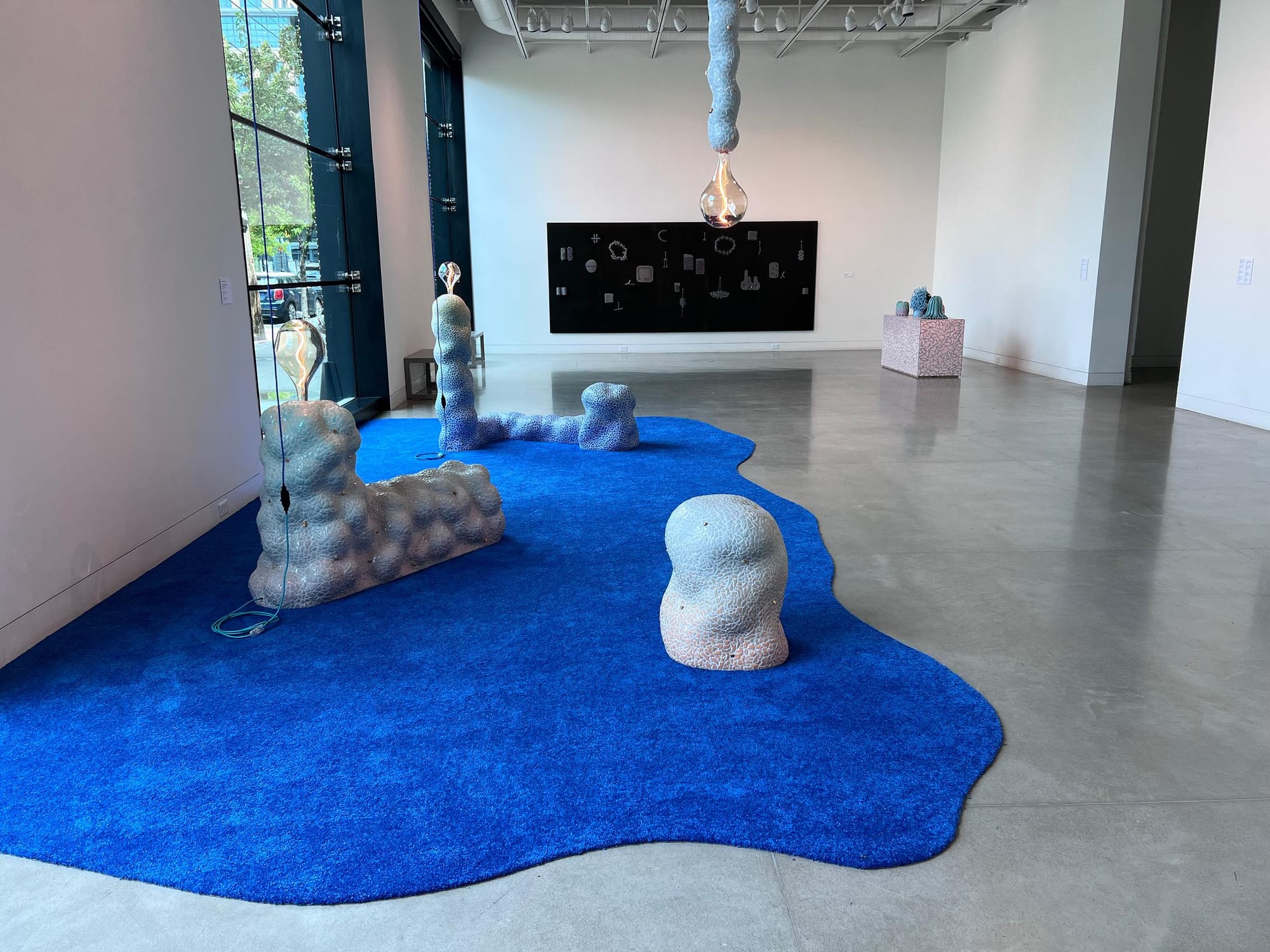Linda Lopez & Mathew McConnell: Live from the Moon
Aug. 4 — Sept. 24, 2023
108|Contemporary
On Christmas Eve in 1968, three American astronauts aboard the spacecraft Apollo 8 became the first humans to enter lunar orbit, in a mission that paved the way for the inaugural lunar landing. People on Earth tuned in to their space telecast and listened, perhaps with a mix of trepidation and awe, as the scratchy, static-filled voice of Commander Frank F. Borman II announced, “This is Apollo 8 coming to you live from the moon.”
To this day, the black-and-white footage from the Apollo 8 mission, like subsequent footage of the 1969 moon landing, remains both novel and uncanny. In our era of 24-hour nature cams and Zoom rooms, it is still somewhat challenging to fathom the uninhabitable distance that broadcast technology was able to close in the sixties. This strange feeling of intimacy at a distance — or intimacy born from distance — can be felt in ceramic artists Linda Nguyen Lopez and Mathew McConnell’s two-person show, Live from the Moon, on view at 108|Contemporary through Sept. 24.
Lopez and McConnell, who are married to each other, are described in the show’s press release as interlocutors with “undeniably distinct” practices: Lopez’s sculptures are “fantastical” and dynamic, “laying bare their internal state,” while McConnell’s are “stable” — they “withhold” themselves from the viewer, “guarding their motivations.” This lean, 18-work exhibition, anchored by two installations in 108’s long, sunlit gallery, sets out to wrestle these two distinct practices into a binary, one that, upon closer inspection, dissolves into pleasant resonances and curious echoes.
Take, for instance, the two sculptural installations that dominate the space. Viewers first encounter Lopez’s cobalt blue carpet, from which three large-scale ceramics with sunset-colored mosaic surfaces — titled Truths (lamp and stool), Night Songs, and Floating Ground — seem to emerge like swimmers in a lake. On this work’s horizon, as it were, hangs McConnell’s Didn’t miss a thing, five adjacent wall-mounted panels on which earthenware curios are displayed, without comment, like artifacts of a lost civilization. Initially, the two installations appear diametrically opposed: Lopez’s sculptures are amorphous, fluid, and subtly psychedelic, while McConnell’s are contained within hard-edged rectilinear planes.

Look closer, however, and one sees how the warm gray details on McConnell’s black panels are runic and whimsical. Several of the objects are tubular and curved, allowing them to stand freely, not unlike Lopez’s sinuous Floating Ground and L‑shaped Night Songs. Lopez and McConnell share a penchant for rolling clay into thin cylindrical cords and gathering these strands into intricate masses. These can be observed on the first and fourth panels (from the left) of Didn’t miss a thing and in Lopez’s azure entanglement Blue Bush, a trophy-sized ceramic displayed on a pink-tiled plinth. The sculptural languages of both artists are also unmistakably biomorphic. On the second and fourth panels of McConnell’s installation are clay tablets resembling fossilized molds of ancient insects, while Lopez’s three large sculptures are sized to the human body, with documentation from previous exhibitions suggesting that they can even be used as seats.

In a sense, by priming viewers to anticipate contrast and opposition, the show ends up challenging us to spot parallels and convergences. Beyond invoking ’60s nostalgia, the phrase “Live from the Moon” proves to be the perfect framing device for a show about two ceramicists, each with their own gravitational fields and far-reaching trajectories within Tulsa’s expansive artistic solar system. —Jenny Wu
Next at 108|Contemporary: Shin-hee Chin: Entangled Harmony






